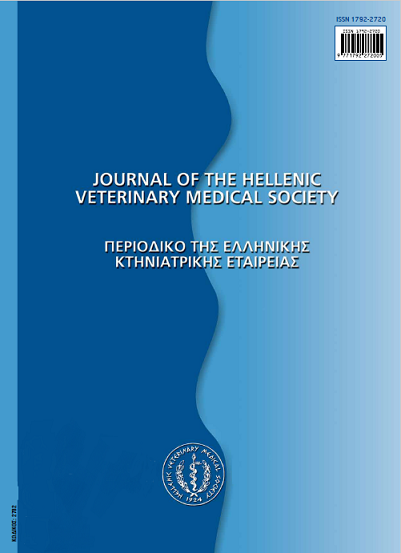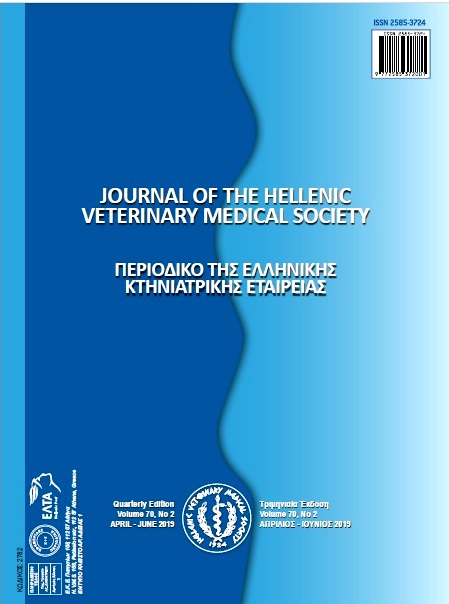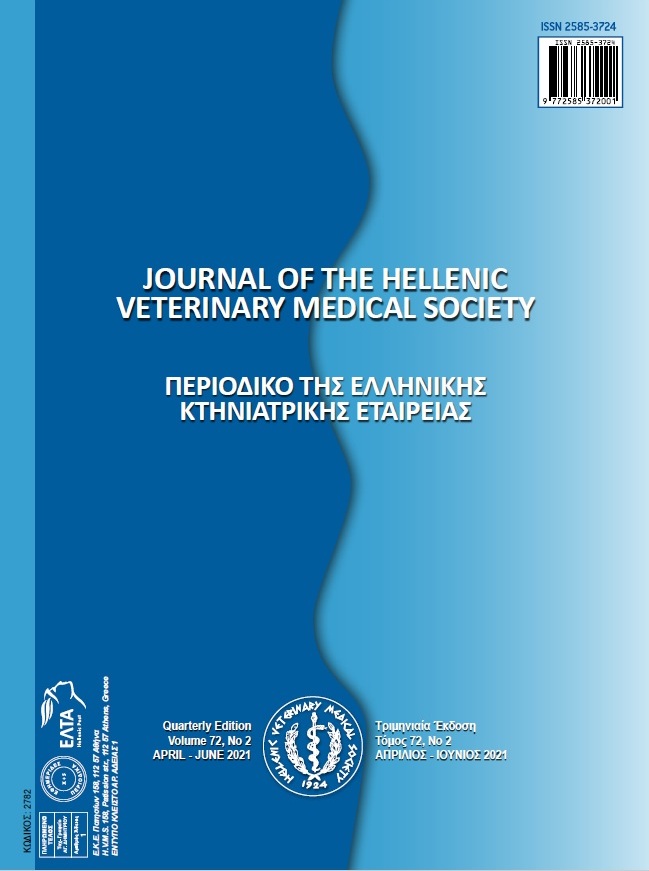Nasal carriage and antimicrobial susceptibility of Coagulase–Negative Staphylococci (CoNS) among healthy veterinary students in Greece
Abstract
During last decades CoNS and especially the methicillin-resistant (MRCoNS) ones have become important pathogens and their infections are usually associated with healthcare settings. CoNS are considered as source of antimicrobial resistance traits for other bacteria and thus the evaluation of their prevalence in the community contributes significantly to the risk assessment in relation to public health. The aim of the present study was the investigationof the nasal carriage and antimicrobial susceptibly of CoNS among healthy veterinary students. From 81 healthy students of the School of Veterinary Medicine, Aristotle University of Thessaloniki, Greece, 24 strains were isolated from 22 (27.16%) students. Of them 54% were identified as Staphylococcus haemolyticus, 45.8% as Staphylococcus warneri, 16.6% as Staphylococcus epidermidis, 4.2% as Staphylococcus pasteuri and 4.2% as Staphylococcus capitis. All isolates were resistant to penicillin, 33.3% were resistant to amoxicillin/clavulanic acid, 29.2% to erythromycin, 4.2% to oxacillin, 4.2% to gentamycin and 4.2% to trimethoprim/sulfamethoxazole. The resistant to oxacillin isolate belonged to the S. epidermidis species and proved to carry the mecA gene. This study showed that the rate of nasal carriage of CoNS among veterinary students in Greece was low. The analysis of the standardised questionnaire, that was completed for each participating student during sampling, showed that pet owners tested positive for the coagulase-negative staphylococci were at a significantly lower rate (p-value=0.007) compared to non-pet owners. Moreover, among the participants who had visited a hospital over the last six months, the percentage of positive results in coagulase-negative staphylococci was significantly lower compared to that of the other participants (p-value=0.048). Although only one student found to carry methicillin-resistant S. epidermidis, its presence is evidence that this pathogen may circulate among veterinarians and the personnel of veterinary health establishments. Surveillance programs should also be performed in veterinary units because the emergence resistant bacteria in this environment may represent a risk to public health.
Article Details
- Come citare
-
MALISSIOVA, E., CHASIOTI, M., PAPADOPOULOS, T., KOMODROMOS, D., HADJICHRISTODOULOU, C., & SERGELIDIS, D. (2018). Nasal carriage and antimicrobial susceptibility of Coagulase–Negative Staphylococci (CoNS) among healthy veterinary students in Greece. Journal of the Hellenic Veterinary Medical Society, 68(4), 557–566. https://doi.org/10.12681/jhvms.16052
- Fascicolo
- V. 68 N. 4 (2017)
- Sezione
- Research Articles

Questo lavoro è fornito con la licenza Creative Commons Attribuzione - Non commerciale 4.0 Internazionale.
Authors who publish with this journal agree to the following terms:
· Authors retain copyright and grant the journal right of first publication with the work simultaneously licensed under a Creative Commons Attribution Non-Commercial License that allows others to share the work with an acknowledgement of the work's authorship and initial publication in this journal.
· Authors are able to enter into separate, additional contractual arrangements for the non-exclusive distribution of the journal's published version of the work (e.g. post it to an institutional repository or publish it in a book), with an acknowledgement of its initial publication in this journal.
· Authors are permitted and encouraged to post their work online (preferably in institutional repositories or on their website) prior to and during the submission process, as it can lead to productive exchanges, as well as earlier and greater citation of published work.





